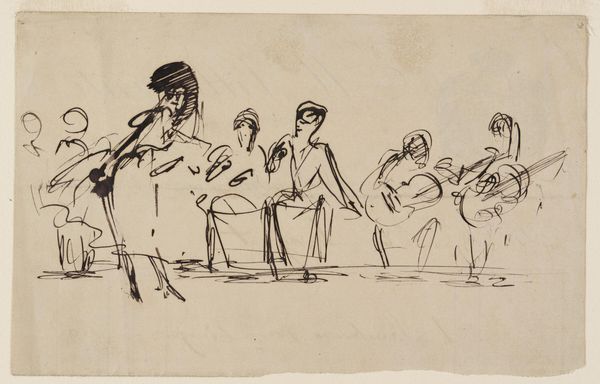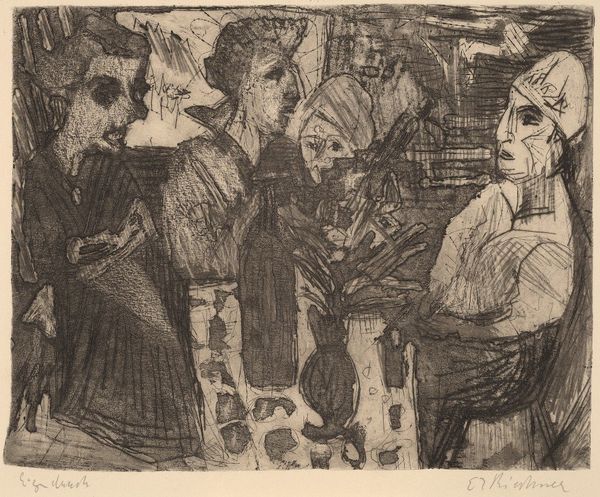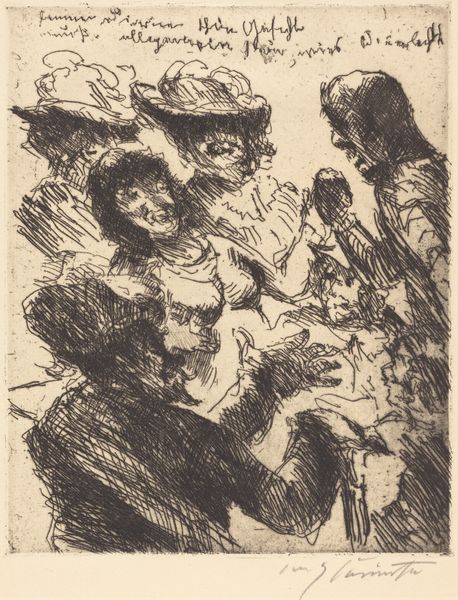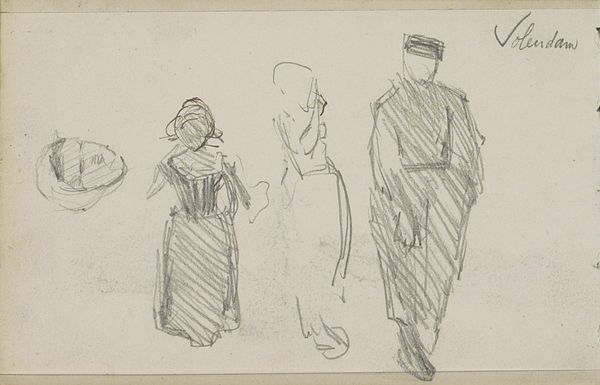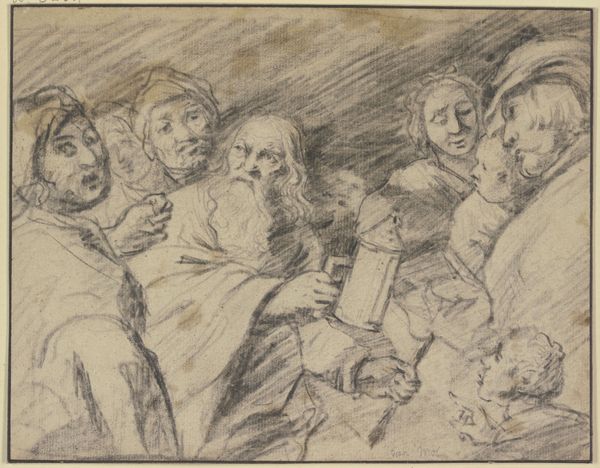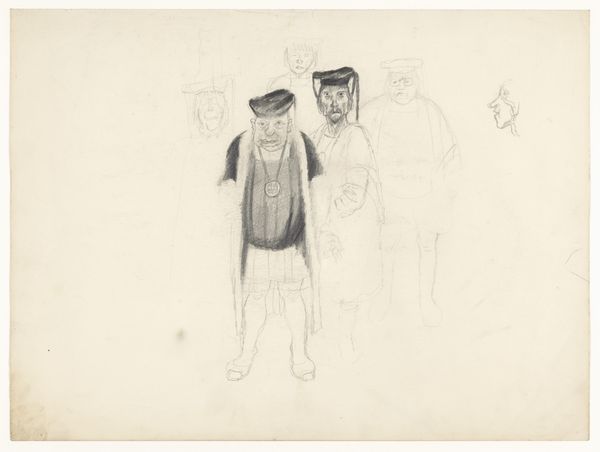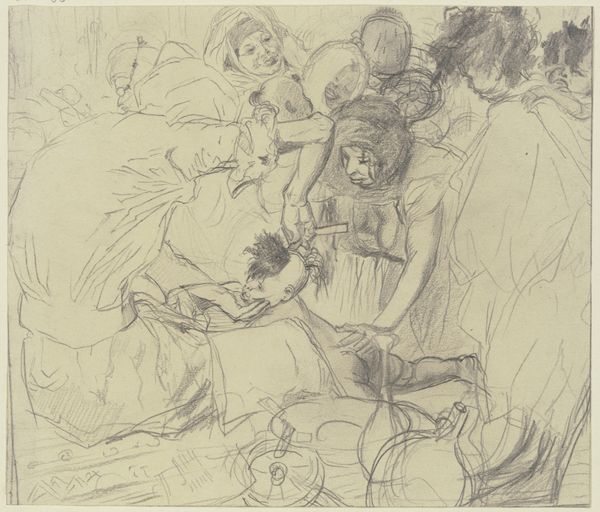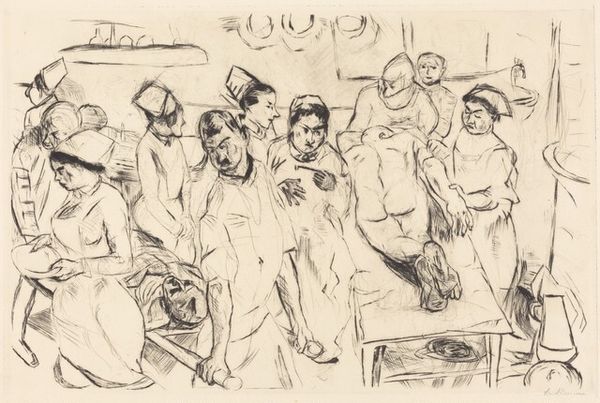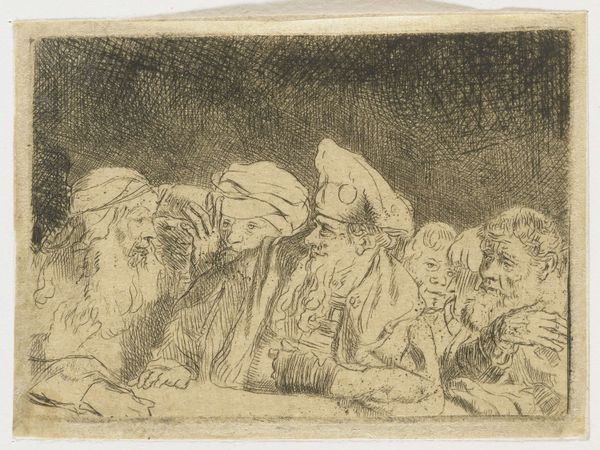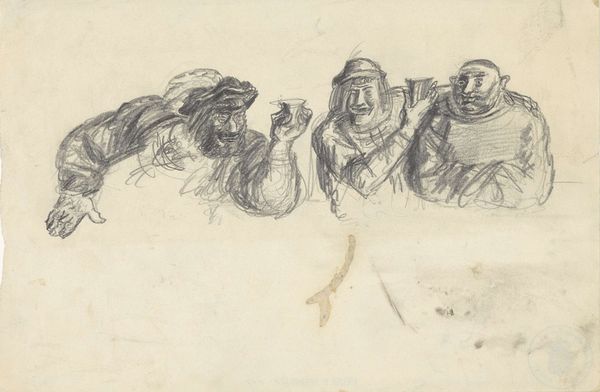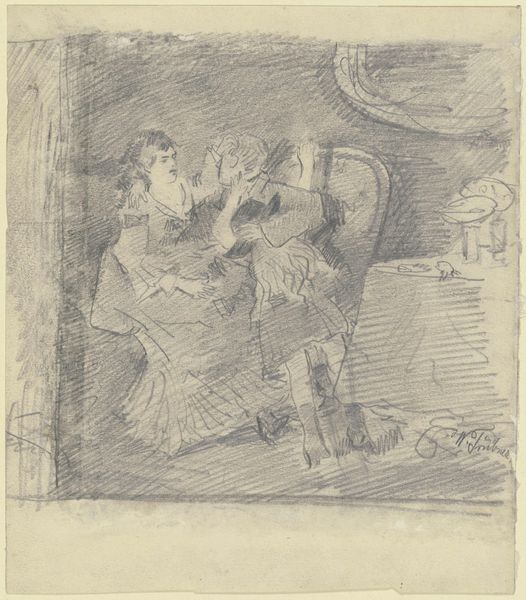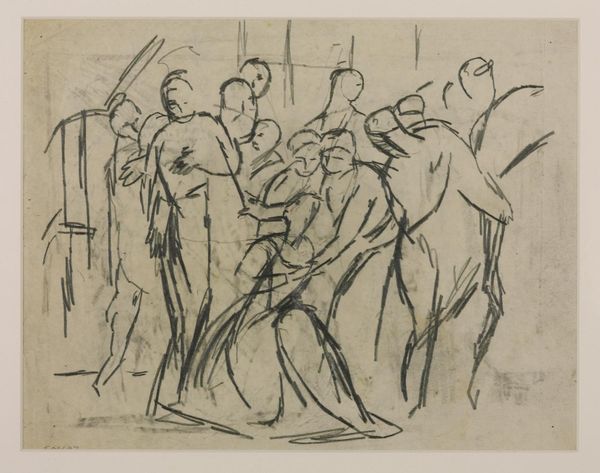
drawing, paper, charcoal
#
portrait
#
drawing
#
figuration
#
paper
#
genre-painting
#
charcoal
#
realism
Copyright: Public Domain
Curator: Here we have "Young people in Holland" by Rudolf Gudden, rendered in charcoal on paper. What's your first take? Editor: It feels… grounded. The earthy tones and the weight of the figures create a somber, almost trudging quality, even though they’re clearly engaged in some kind of activity, possibly a dance. Curator: Interesting. Gudden seems to be tapping into the symbolism of community and tradition, focusing on a specific regional identity through their garments and communal activity. The heaviness you describe, that could stem from the weight of those cultural expectations. Editor: Precisely. These aren't just young people; they're embodiments of Holland, or at least, Gudden's interpretation. Do you see the clear class dynamics present in how people dress? Curator: Absolutely. Each stroke, each shading choice emphasizes the weight of inherited cultural scripts that define them. The way the figures clasp hands speaks to collective identity, yes, but also to social constraints. Editor: Considering the period and rise of social realism, this makes complete sense. The focus on everyday life and particularly the lives of ordinary people is definitely a form of historical documentation, it is definitely about representing specific class status through clothes. Curator: I find the composition also suggests that those at both sides of the chain want to scape, this tension contributes to a mood beyond pure cheerful innocence. The way Gudden captured this moment hints at deeper currents, those unspoken obligations of a close-knit society. It feels less celebratory and more… resigned. Editor: Yes, "Resigned", is a great descriptor! Despite being "young people," the exuberance we typically associate with youth is muted here. It is this what transforms it from a simple genre scene into a document of its time. A representation of how societies see young people and impose cultural expectations on them. Curator: It really underscores how artists can use the symbolic language of everyday life to dissect complex social narratives. Gudden created not just a portrayal of young people, but also a nuanced mirror reflecting the hopes and constraints within their society. Editor: And that's what keeps it relevant beyond its historical context— the universal human struggle to navigate individual desire and societal expectation.
Comments
No comments
Be the first to comment and join the conversation on the ultimate creative platform.
